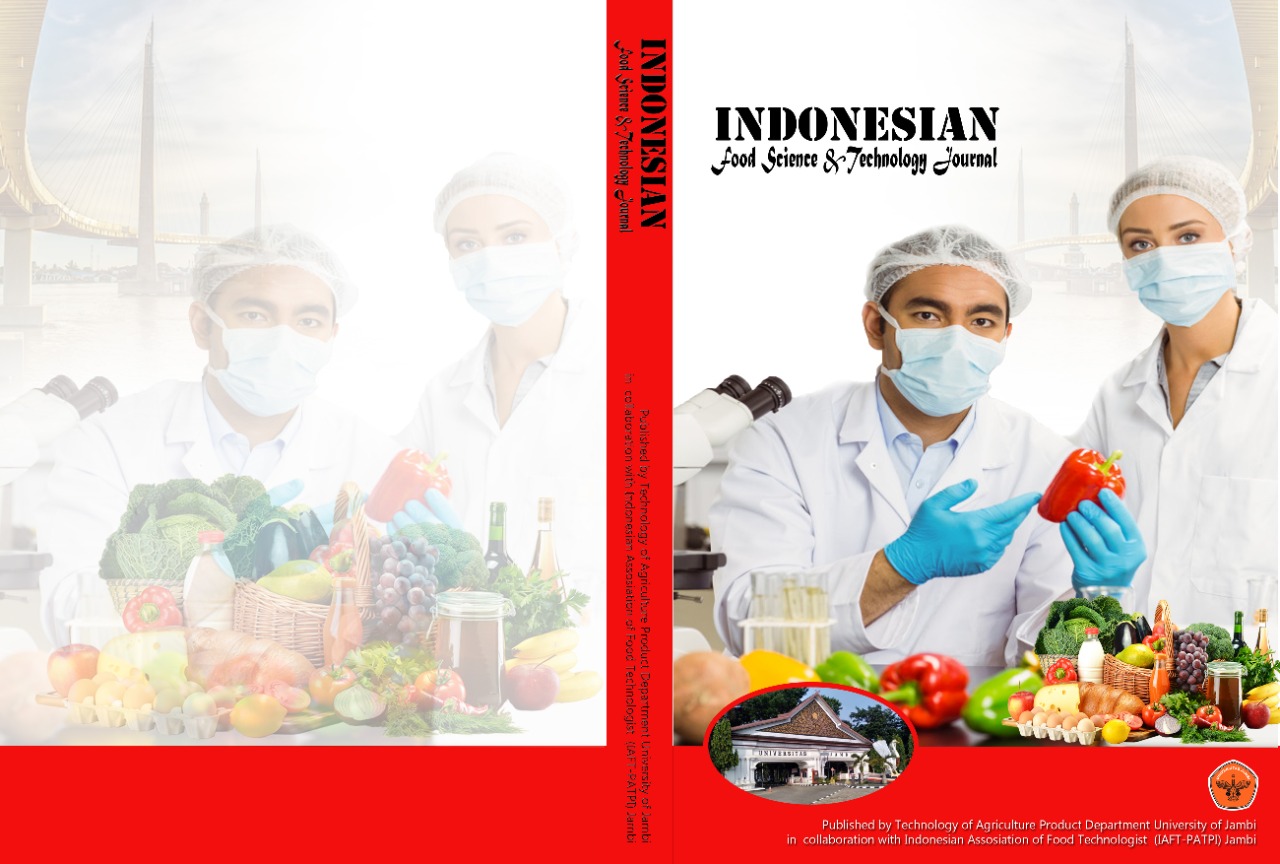Optimization of Nanobentonite-CuO Adsorption for Reducing 3-MCPDE, Free Fatty Acids, and Peroxide Values in Bulk Cooking Oil: A Study of Adsorption Efficacy and Isotherm Modeling
DOI:
https://doi.org/10.22437/ifstj.v8i1.36390Keywords:
3-MCPDE, Free Fatty Acids (FFAs), Peroxide Number, Nanobentonite-CuO, adsorptionAbstract
Indonesia is the largest palm oil producing country in the world. A factor that affects the quality of cooking oil is the presence of diglycerides and free fatty acids. Diglycerides in palm oil serve as precursors for the carcinogenic chemical 3-Monochloropropane-1,2-diol ester (3-MCPDE), whilst elevated concentrations of free fatty acids (ALB) might compromise oil stability. Numerous investigations indicate that the cooking oil present in the population includes the 3-MCPDE molecule at levels ranging from 8,150 to 58,140 ug/kg. The maximum permissible amount is 2 ug of 3-MCPDE per kilogram of body weight per day. The pillarization process involves the amalgamation of Cu(NO3)2 and NaOH inside an activated bentonite solution. The adsorption analysis of 3-MCPDE employing nanobentonite-CuO was performed using Gas Chromatography Mass Spectrometry (GC-MS) in accordance with the AOCE Cd 29a-2013 method, while free fatty acid and peroxide values were evaluated by a titration method that accounted for temporal variations. The peak efficacy of Nanobentonite-CuO in adsorbing the 3-MCPDE molecule was seen at 15 minutes, with an adsorption efficiency of 52.4%. Peroxide numbers achieved ideal performance at 45, 60, and 75 minutes, with an adsorption efficiency of 80%, whilst free fatty acids reached top performance at 75 minutes with an adsorption efficiency of 76.69%. The adsorption of 3-MCPDE compounds, free fatty acids, and peroxide content by Nanobentonite-CuO, as indicated by Adsorption Isotherm modeling, conforms to the Freundlich Isotherm, implying a physical adsorption mechanism.Downloads
Downloads
Published
2024-12-31
How to Cite
Permana, E., Naswir, M., Hidayat, A. N. H., Wijaya, D. E. ., Rahayu, M. A. ., & Wazzan, H. . (2024). Optimization of Nanobentonite-CuO Adsorption for Reducing 3-MCPDE, Free Fatty Acids, and Peroxide Values in Bulk Cooking Oil: A Study of Adsorption Efficacy and Isotherm Modeling . Indonesian Food Science and Technology Journal, 8(1), 108–116. https://doi.org/10.22437/ifstj.v8i1.36390
Issue
Section
Articles
License
Copyright (c) 2024 Indonesian Food Science and Technology Journal

This work is licensed under a Creative Commons Attribution 4.0 International License.







